Conservation & restoration

Preservation
The professional field of conservation and restoration is dedicated to preservation. Preventive conservation is a central focus. We look after the collection holdings and loans in the depot, in the exhibition and when traveling. We research the materiality in the diverse historical and cultural contexts and carry out restorations.
The ever-growing collection includes paintings, sculptures, works on paper, photographs, videos and films as well as performance works. Our specializations in painting and sculpture, contemporary art, modern media, graphics and photography are designed to reflect the material and immaterial diversity of the works.
The balance between accessibility for visitors and sustainable protection of the works is a central concern for us. Our activities are based on current standards and guidelines whose dynamic updating we actively help to shape and in this way incorporate current social issues.
Projects
We research and preserve art as tangible and intangible heritage. Here you can find out more about our projects and take a look behind the scenes.
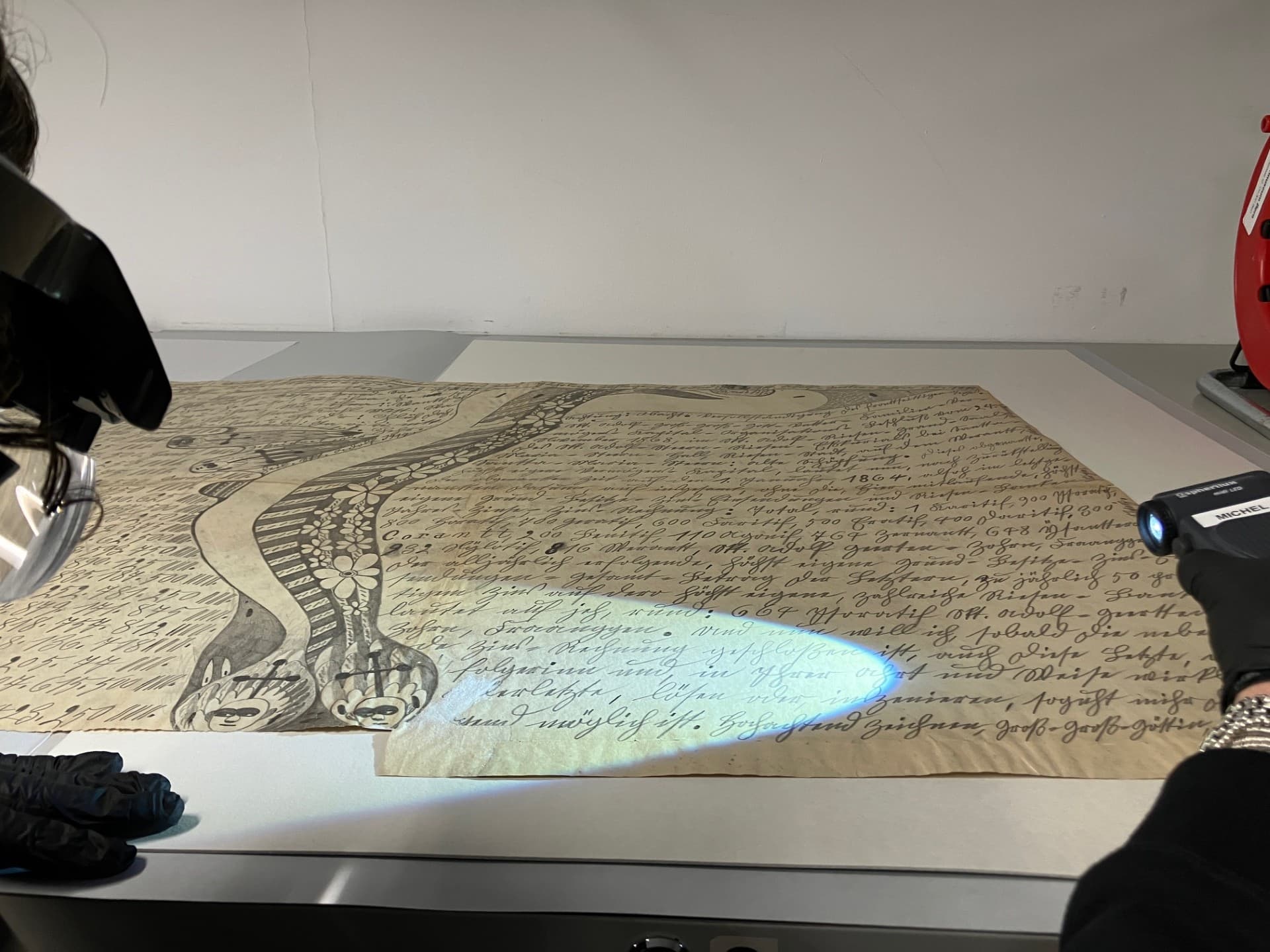
The main aim of the project is to create a basis for the development of a conservation and utilization concept for the holdings of the Adolf Wölfli Foundation at the Kunstmuseum Bern. To this end, over 1000 drawings and the booklets bound by Adolf Wölfli himself will be assessed according to visual criteria and measured selectively using near-infrared spectroscopy. The investigations will make it possible to assess the degree of degradation of the various carrier materials and to make a more precise prognosis of the mechanical and chemical durability. We will reflect on the results in the context of current restoration ethics discourses.
- Duration: May - December 2024
- Project management: Dr. Nathalie Bäschlin and Hilar Stadler,
- Content management/project collaboration: Philine Claussen
- Project collaborator: Michel Ingoglia
- Cooperation: SurveNir, Dr. Dirk A. Lichtblau
- Funding: Adolf Wölfli Foundation
Restoration project for the Juan Gris (1887-1927) group of works, Hermann and Margrit Rupf Foundation, Kunstmuseum Bern
"The most important part of your collection is the Gris collection." This quote comes from the gallery owner Daniel-Henry Kahnweiler, from a letter to Hermann Rupf in 1932. Today, the group of works comprises 14 paintings from 1913 to 1925. It is special because we can see the development of Juan Gris's Cubist painting in the paintings and we perceive the works as authentic today. Almost all of the original stretcher frames have been preserved and many of the painting surfaces have remained untouched. Their fragile condition led to the restoration project. The aim of the project is to understand the artist's painting style and the condition of the paintings. We have examined the sources, "x-rayed" the works and consulted selective analyses. The necessary conservation and restoration measures are determined individually for each painting, with great importance being attached to the group of works as a whole.
- Duration: 2019 - 2024
- Project management: Dr. Nathalie Bäschlin
- Project collaboration: Florence Lépine, Katharina Sautter
- Cooperation: Art Technology Laboratory, Bern University of the Arts
2015 heralded the end of tape-based storage: Sony and other major companies discontinued the manufacture of magnetic video tapes and the production of tape-based playback and recording devices. In addition, the latest works (born-digital) are now only purchased on so-called removable storage media, i.e. hard disks or flash drives such as USB sticks. The storage of media art requires the same care as paintings, sculptures and works on paper - with different conservation strategies: The documentation of original artistic production, its current presentation and its preservation for future generations present a multifaceted challenge.
- Duration: 2022 - 2025
- Project management and implementation: Emilie Magnin in collaboration with Raphael Frey
- Cooperation: docuteam AG
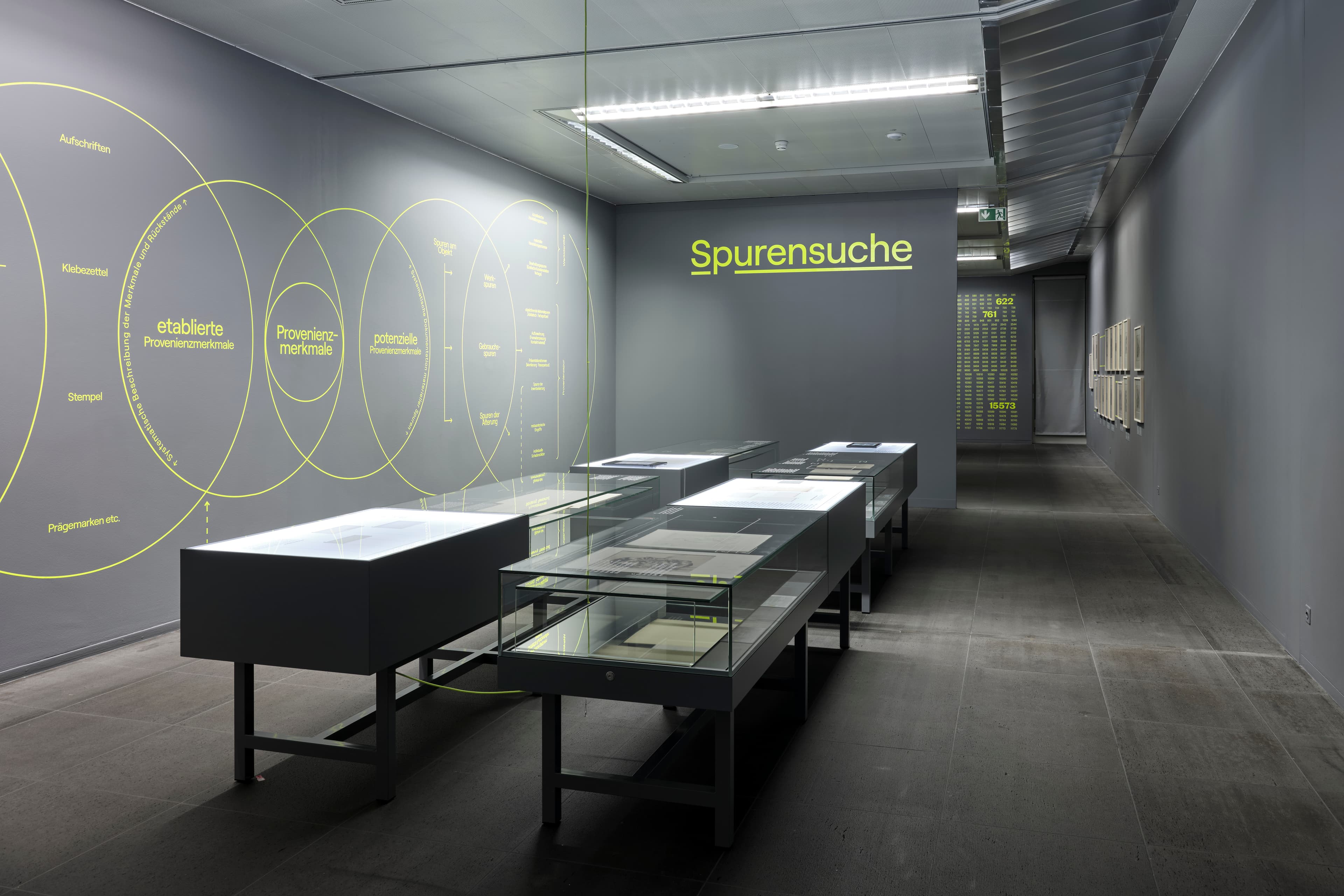
An innovative approach to the examination of works on paper was developed in an interdisciplinary collaboration between the disciplines of art technology and provenance research. The aim was to find traces in the art technological findings that could provide information on previous owners (and thus support provenance research). The findings from our investigations show that the systematic recording of traces of work and use, in particular traces of former mounting and degradation, is an effective method for identifying potential institutions or collections of origin.
- Duration: 2019 - 2022
- Project management and implementation: Dorothea Spitza with Katharina Otterbach and Silja Meyer
- Publication: Silja Meyer, Katharina Otterbach, Dorothea Spitza, "Ausradiert, abgeschabt, überklebt. Material traces and manipulated collection features on works from the Cornelius Gurlitt legacy", in: Kunst, Konflikte, Kollaboration. Hildebrnd Gurlitt und die Moderne, Schriften der Forschungsstelle 'Entartete Kunst' Band 14, ed. by Nikola Doll, Uwe Fleckner and Gesa Jeuthe Vietzen, Walter de Gruyter GmbH, Berlin/Boston 2023, pp.301-322.
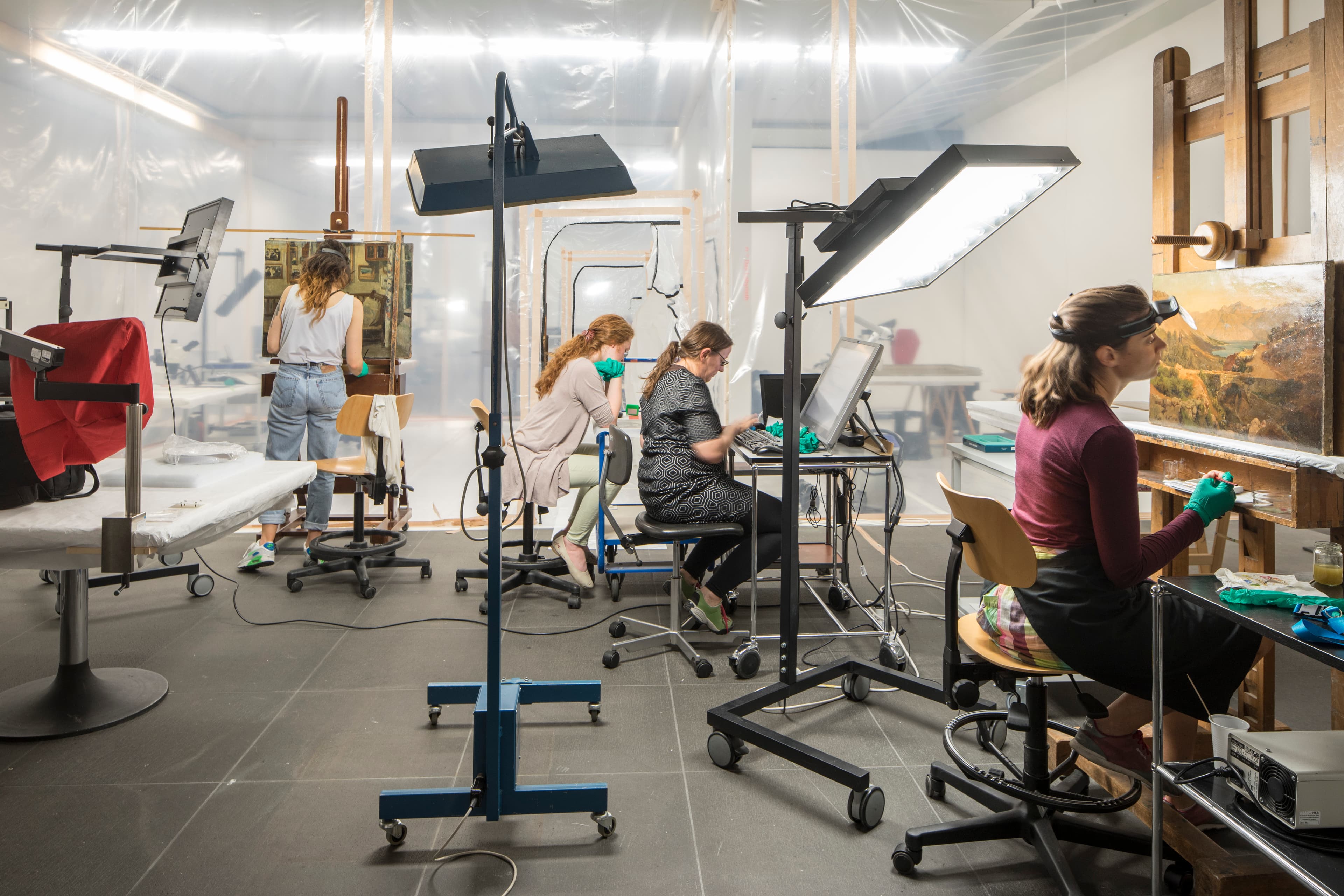
In July and August 2017, around 240 works of art from the Cornelius Gurlitt bequest were examined by the Kunstmuseum's conservators in cooperation with freelance specialists and students of conservation and restoration at Bern University of the Arts and conserved on the occasion of the first public presentation of the works in the exhibitions "Bestandsaufnahme Gurlitt" (2017-2019). The workshop was also open to visitors during the exhibition.
The focus was on conservation measures, such as replacing missing parts, securing damaged paper or endangered layers of paint. In the case of the works of art in the legacy, there were signs of damage caused by mounts that were unsuitable for conservation, resistant to ageing and infested by microorganisms. In the case of prints, the quality of the paper also had an impact on the state of preservation.
The technical material examinations allow conclusions to be drawn about the original condition and later changes to the work. They enable statements to be made about storage, restoration or altered forms of presentation and thus sometimes provide valuable information about the provenance of a work.
For the purposes of further provenance research, the provenance features of the work, such as inscriptions, labels, stamps or seals, were documented. In the process, it was established that provenance features had been deliberately manipulated or removed from many of the artworks examined from Gurlitt's legacy.
- Duration: 2017-18
- Project management: Dr. Nathalie Bäschlin and Dorothea Spitza
- Project implementation: Philine Claussen, Katja Friese, Matthias Läuchli, Katharina Sautter with the support of freelance conservators and students from Bern University of the Arts.
- Cooperation: Department of Conservation and Restoration, Bern University of the Arts
The painting Standing Nude (Elvira), 1918-19, inv. no. G2223, oil on canvas, 92 x 60 (without decorative frame) by Amedeo Modigliani is a masterpiece in the collection of the Kunstmuseum Bern. The comparison with Modigliani's portrait Elvira at the Table 1918-19 shows how the artist captured different facets of the personality of the same model by means of subtle variations in his painting technique. The art-technological investigation and source research also lead to new insights into the identity of the model and the dating of the painting.
The project was based on a collaboration between specialists in conservation and restoration, art history and the natural sciences, with the aim of researching Modigliani's painting style and working process. Based on the Amedeo Modigliani exhibition at the Tate Modern, London 2017 - 2018, Nancy Ireson and Simonetta Fraquelli, in collaboration with Barbara Buckley, Senior Director of Conservation at the Barnes Foundation, Philadelphia and conservator at the Tate Modern Annette King, developed the project Up Close, an exhibition at the Barnes Foundation in 2022-23 that explicitly combines the expertise of different disciplines.
- Duration: 2018 - 2023
- Project management: Research initiative of Tate Modern, London with international partner institutions
- Implementation Kunstmuseum Bern: Dr. Nathalie Bäschlin
- Cooperation: Courtney Books, Saint Louis Art Museum; Tate Modern London; Barnes Foundation Philadelphia; Art Technology Laboratory, Bern University of the Arts
Digitization project with the support of Helvetia Insurance
The Kunstmuseum Bern houses around 350 works by Meret Oppenheim from the period between 1930 and 1985 with a spectrum of materials, material combinations and techniques that characterize her work as a whole. The project is doing pioneering work on the issue of combining digitization processes with preventive conservation requirements in such a way that data is created that provides a new basis for research and mediation.
In the first phase, the two-dimensional works on paper and paintings were scanned contact-free in cooperation with Recom Art GmbH Berlin. The reference scans not only precisely capture the surfaces. They also contain measuring points that document the condition of the works at the time of digitization and support the careful monitoring of colour changes.
During the second phase, a process involving 3D scanning and photogrammetry by CL-Y GMbH Zurich will be applied to two three-dimensional works. It aims to combine form with surface and color information. On the basis of high-resolution scans, 3D models are calculated in which every point can be measured. The color information was captured photogrammetrically and calculated with the volume model. Digital 3D models provide researchers with new levels of access to works of art. At the same time, they also form the starting point for a critical dialog on the understanding of authentic originals and digital copies and access to them.
- Duration: 2017 - 2021
- Project management: Dr. Nathalie Bäschlin
- Funding with the support of Helvetia Insurance
- Project collaborators: Philine Claussen, Katja Friese, Matthias Läuchli, Katharina Sautter, Josefine Werthmann
- Cooperations: Sven Schönauer recom Art GmbH Berlin (plan scans) and Daniel Lütolf (3D models), CL-Y GmbH Zurich
The project examines the question of how fragile paintings can be transported safely. To date, 54 transport monitoring records have been recorded for the Kunstmuseum Bern and other Swiss museums
(15 national, 24 international, 15 intercontinental transports). The data collection is impressive: over 1000 continuous hours of transportation were recorded with a measurement frequency of 1600 Hertz. The transport monitoring enables the creation of a cumulative travel report (climate fluctuations (T/rH), time of maximum loads, number and strength of shocks above the specified limits). They are used for quality assurance of the packaging (performance testing) and provide precise data for the characterization of load profiles depending on the transport phases (truck, flight, handling). Building on the damping concept formulated in 2015, which aims to reduce coupling effects in low frequency ranges, the requirements for packaging and damping systems can be continuously refinedThe results of the monitoring serve as a basis for sustainable transport planning and loan decisions.
- Duration: 2015 - ongoing
- Project management and implementation: Matthias Läuchli in collaboration with Dr. Nathalie Bäschlin
- Cooperation: MSR Electronics GmbH

Conservation and restoration project of the group of works in the Kunstmuseum Bern of the panel paintings by Niklaus Manuel (1484-1530) in the Kunstmuseum Bern. The aim of this project is to comprehensively conserve and restore the Bernese artist's altarpieces, the central group of works in the collection of the Kunstmuseum Bern. Art technological investigations are also an important part of this project.
- Duration: 2015 - 2017
- Project management: Dr. Nathalie Bäschlin
- Implementation: Florence Lépine, Matthias Läuchli
- Funding: Burgergemeinde Bern, Department of Cultural Affairs City of Bern, Gesellschaft zu Mittellöwen and Kunstmuseum Bern
- Cooperation: Historisches Museum Bern; Art Technology Laboratory, Bern University of the Arts, Swiss Institute for Art Research SIK-ISEA Zurich.
Excerpts from the projects
Collection & Research

Collection
The collection of the Kunstmuseum Bern is one of the most important and diverse collections in Switzerland and is of international importance, above all thanks to the groups of works of classical modernism.
Read more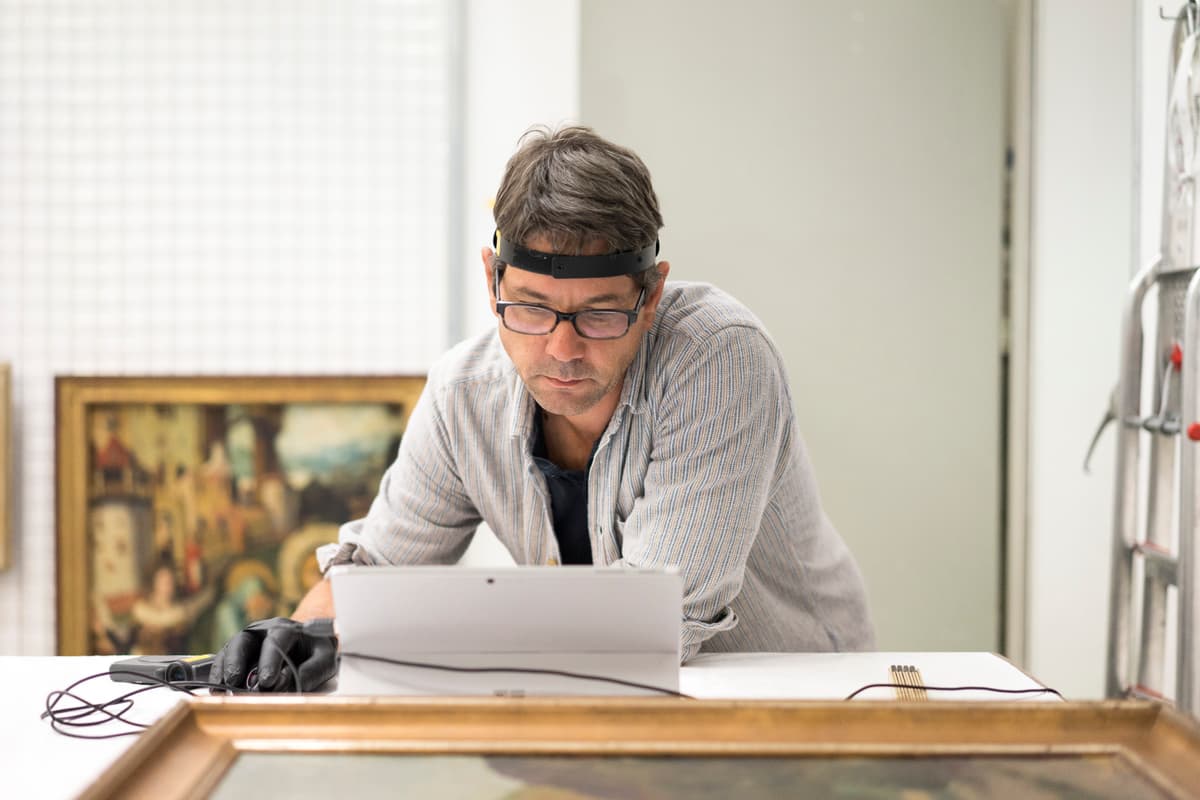
Provenance research
Provenance research concerns itself with the ownership-history and property-rights of artworks and artefacts.
Read more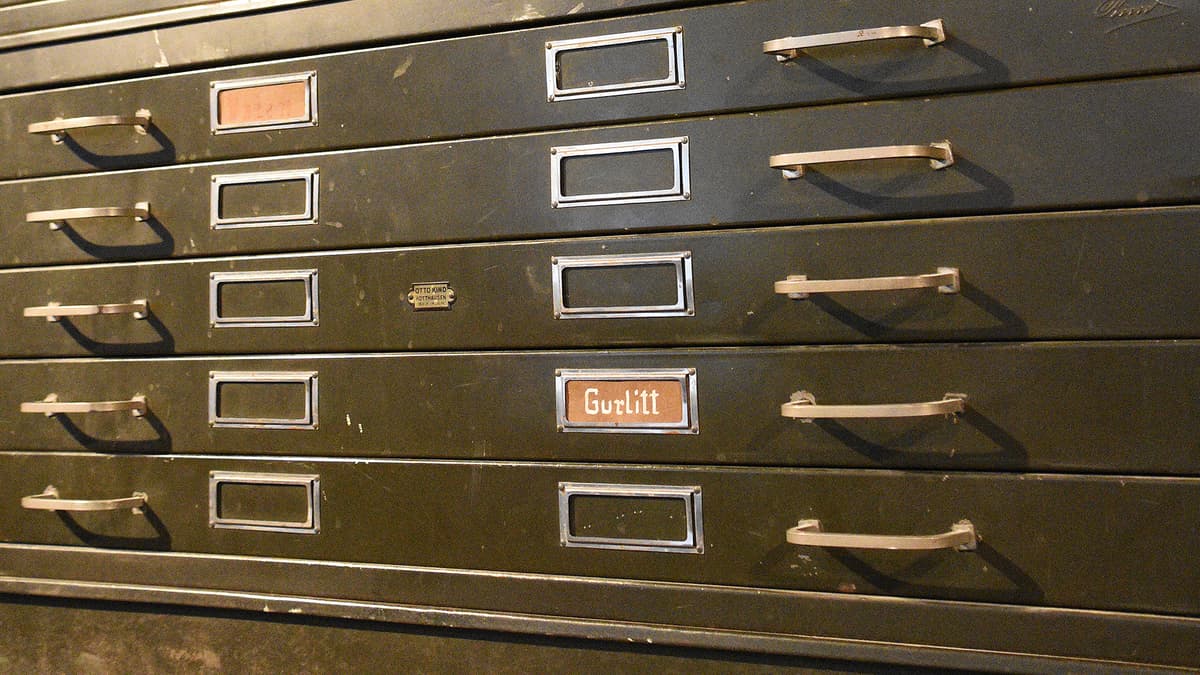
The Gurlitt Estate
The acceptance of the Cornelius Gurlitt Estate in November 2014 marked a change of perspective. The Kunstmuseum Bern is committed to long-term provenance research and the transparent handling of research findings.
Read more